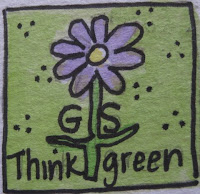"Things don't turn up in this world unless somebody turns them up."
James A. Garfield, 20th U.S. President
I liked this quote for today. And of course it fits in with our Gold and Silver Award girls Take Action Projects...
Both
Awards are focused on the girl identifying an issue and looking for the
root cause. And maybe, in the process of looking, the girls turn up
something unexpected. And maybe, it's a key need that is not
being addressed in the community. Perhaps, she's interested in helping
the homeless, beyond a collection project. And perhaps, in diving deep
into the issue, she finds that there is less than adequate local help to
meet the need in her area.
The
girl is taking the initiative and identifying the need. She then has
the opportunity to create partnerships with existing agencies, start a
new tutoring program for kids without homes, create and run an after
school program throughout a school year or whatever project her
investigation leads her to. As we all know, there's not just one answer
to a problem. Our girls have the tools and character to Take Action to
make change.
In
their years of Scouting, they have learned to Discover and Connect. The
Gold and Silver Award Projects are just bigger ways to Take Action.
Again, it's not about starting with the project, it's about identifying
the issues and root causes to make a difference in the world. Their
world.
And
what's our role as parents, advisors, leaders, friends? To support
them in their efforts! Not do it for them, but give them guidance,
coach and support. There may be tears and frustration, but the girl
will learn, sometimes it takes to get to joyful success. We're here to
help, not do.
And we're here to make sure they celebrate their success. Big time.







